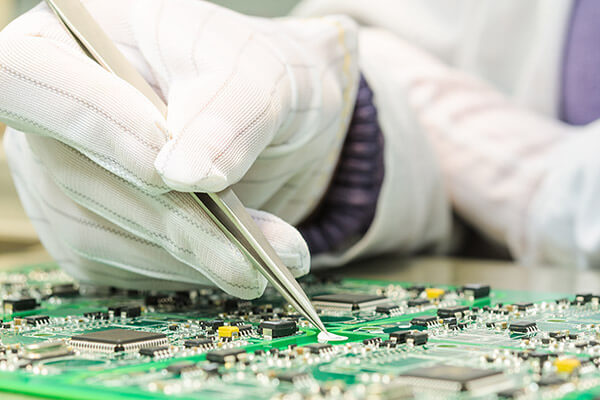
Do you often wonder “how does a capacitor work”?
I never really liked the “physics explanation”.
It states something like “a capacitor works by storing energy electrostatically in an electric field”.
I don’t know about you, but that sentence didn’t make me any wiser when I was starting out with electronics.
I like to answer the question of “how does a capacitor work?” by saying that a capacitor works like a tiny rechargeable battery with very very very low capacity.
The time it takes to discharge a capacitor is usually only a split second. And so is the time to recharge it.
What Is A Capacitor?
So the capacitor can store charge. And it can release the charge when needed. But how does it do this? How does a capacitor work on a deeper level?
A capacitor is made up of two metallic plates. With a dielectric material in between the plates.
When you apply a voltage over the two plates, an electric field is created. Positive charge will collect on one plate and negative charge on the other.
And this is what the physicists mean when they say that “a capacitor works by storing energy electrostatically in an electric field”.
There are many different capacitor types.
What Does A Capacitor Do?
A capacitor is commonly used for filtering. But what is filtering?
Battery Analogy
Let’s look at an example with a battery.
Many alarm clocks are powered by the electrical outlet on the wall in a house. Sometimes, the power goes down. Most alarm clocks have a backup battery that will take over and power the alarm clock until the power comes back on so that the time is not reset.
Well, in electronic circuits capacitors can be used in the same way.
Decoupling Capacitors
For example if you have a circuit with a microcontroller running some kind of program. If the voltage for the microcontroller drops for only a split second, the microcontroller restarts. And you don’t want this.
By using a capacitor, the capacitor can supply power for the microcontroller in the split second that the voltage drops so that the microcontroller doesn’t restart. This way it will filter out the “noise” on the power line.
This type of filtering is called “decoupling”. And a capacitor used for that purpose is called a “decoupling capacitor”. It’s also called a “bypass capacitor”.
Using Capacitors For Filters
You can also combine capacitors and resistors to form filters that target specific frequencies. For example in an audio system you can target the high frequencies to remove them (e.g. in a sub-woofer). This is called a low-pass filter.
